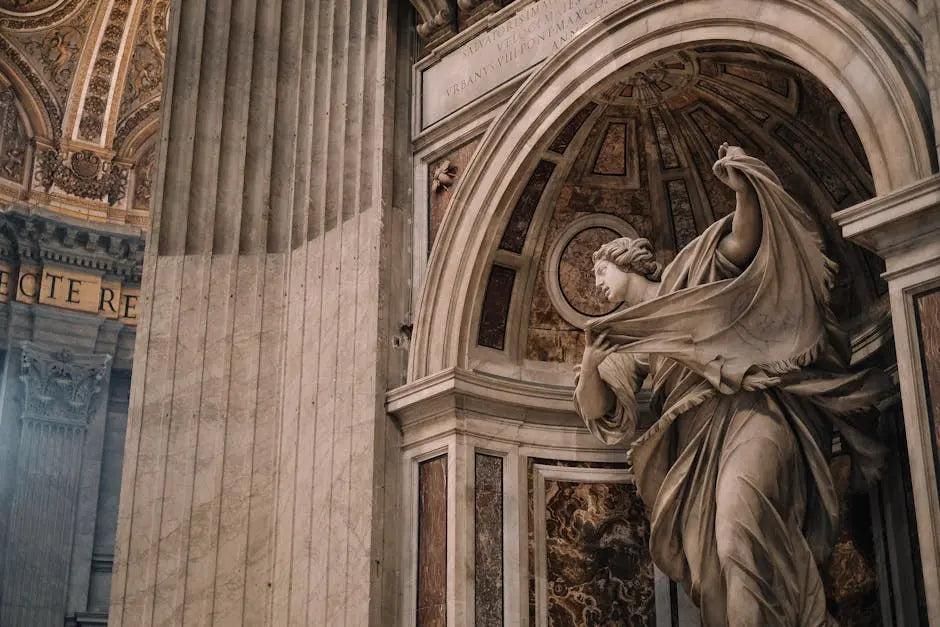My Cart
Your Cart is Currently Empty
FREE SHIPPING ON ALL ORDERS ABOVE $500


Stone sculpture has been a significant form of artistic expression throughout human history. Its enduring presence in art history raises intriguing questions about its importance and the messages these sculptures convey through time. In this blog, we will explore the pivotal role stone sculpture has played across different cultures and time periods.
Throughout ancient civilizations, stone sculptures have been used to represent religious, political, and cultural ideals. From the massive structures of ancient Egypt to the intricate carvings of Mesopotamia, these sculptures served as symbols of power and devotion. They oftentimes depicted gods, leaders, and mythical creatures, capturing the essence of these societies’ beliefs.
A remarkable example is the Great Sphinx of Giza, which combines a mythical creature with the likeness of a pharaoh, representing both human and divine attributes. The enduring mystery of the Sphinx’s origins and purpose continues to captivate archaeologists and historians alike.
In the city of Persepolis, the stone reliefs narrate the grandeur of the Persian Empire, showcasing the encounters between different nations under Persian rule. These intricate carvings offer a glimpse into the vast cultural exchanges and diplomatic relations of the era.
Stone sculpture allowed different cultures to express their unique beliefs and artistic styles. Each civilization imbued its sculptures with distinctive characteristics that reflected its values, rituals, and social structures. The artistry used in creating these sculptures became a hallmark of cultural identity.
In ancient India, stone carvings adorned temple walls, vividly depicting scenes from epic texts like the Mahabharata and Ramayana. These sculptures served both religious and educational purposes, helping communicate sacred narratives to the public.
The Olmec civilization’s giant stone heads are another example of cultural expression. Each head, with its unique facial features and headdress, is believed to represent Olmec rulers, demonstrating the civilization’s societal hierarchy and respected leaders.
Stone sculpture has influenced modern art movements by inspiring new styles and techniques. Many contemporary artists draw inspiration from ancient sculptures, incorporating traditional motifs with modern interpretations. This fusion of old and new creates a dynamic dialogue between past and present art.
Artists such as Constantin Brâncuși elevated the role of stone sculpture in the 20th century art world. His work is renowned for its simplified forms and emphasis on the natural qualities of the stone, which evoke the profound spirituality of ancient craftsmanship.
Moreover, the Land Art movement saw artists using stone and other natural materials to create large-scale installations that transform landscapes. These works highlight the enduring relationship between humanity and stone, extending its significance into modern contexts.
Preserving stone sculptures involves delicate conservation efforts to ensure they withstand the test of time. These efforts are crucial for maintaining our cultural heritage and providing a tangible connection to our historical past. Conservationists employ techniques like cleaning, stabilization, and environmental control to safeguard these invaluable artifacts.
Organizations worldwide engage in preservation activities to protect stone artifacts from environmental and human threats. Through digital technology, sculptures are being scanned and documented, creating digital archives that offer an additional layer of preservation and accessibility.
Collaborative projects between museums and academic institutions strive to educate the public on the importance of preserving stone sculptures. These initiatives encourage community involvement and raise awareness about the fragile nature of this art form.
Stone sculpture is more than just a form of artistic creation; it’s a testament to human creativity, resilience, and cultural diversity. As we uncover the layers of history through these sculptures, we gain insight into the evolution of human expression and the impact of art through time. Stone sculptures stand as silent witnesses to our past, narrating stories that continue to resonate in today’s artistic landscape. Visit our homepage to explore more about the timeless legacy and significance of stone sculptures.